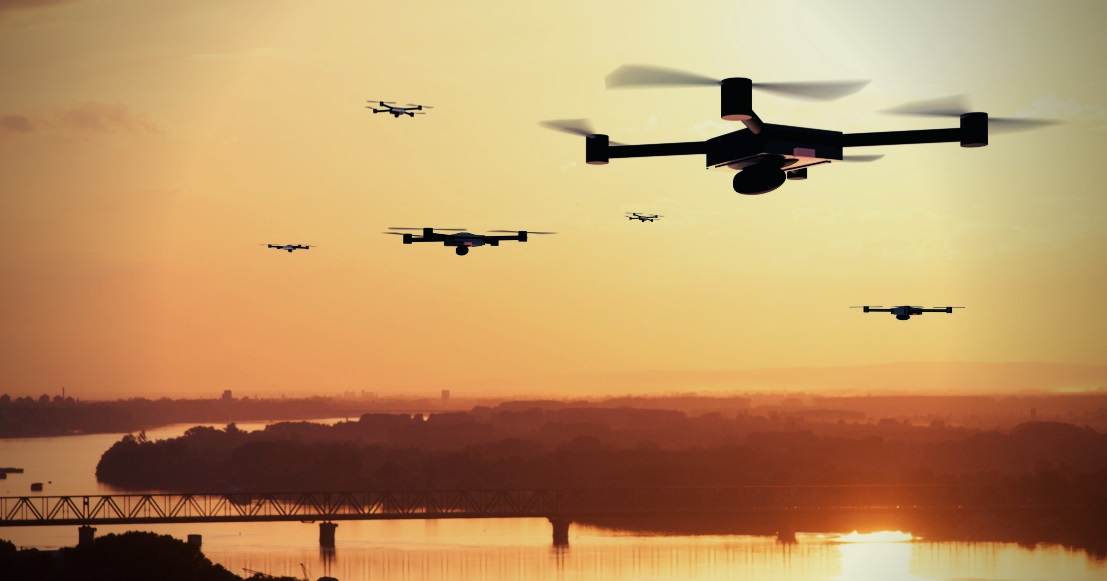Why Drones May Soon Be Delivering Your Internet Services

In 2016, Facebook Inc. launched the Aquila Drone to attempt to provide high altitude broadband internet. This drone was powered by the sun and wider than a Boeing 737 jetliner but struggled to adjust to weather conditions and the right wing was damaged just before landing. Since then, Facebook has pulled this project and has decided to not develop its own aircraft.
Since then, other tech companies such as Amazon Inc. and SpaceX have placed big bets on providing internet service around the world using thousand’s of small satellites. SpaceX’s had plans to launch 60 internet-beaming satellites into orbit last week but called it off to retool the software. Elon Musk’s rocket company said the launch will most likely take place within the next week.
These new satellites will be much different than Facebook’s solar-powered, high-altitude drones.
There have been advances in solar cell and battery technology that has made more technologies feasible. In April, Japanese telecommunications company SoftBank said it would team up with California drone maker AeroVironment to build a drone capable of flying to the stratosphere, hovering around an area for a few months and serving as a floating cell tower to beam internet to users on Earth. Airbus an Boeing are also working on their own versions of high-flying, solar-powered drones.
Driving these and other projects is the promise of 5G connectivity. The fifth-generation cellular technology that has just begun rolling out will increase download speeds significantly. Its reliability should enable services such as self-driving care and remote medicine.

The attraction of drones and balloons is that they could much less than building cell towers in these remote areas. And with their location being closer to Earth than satellites, this could offer faster response times.
Industry experts estimate that only 10-20% of the Earth’s land area is covered by terrestrial cell towers. Mobile operators are interested in providing continuous service across the world, particularly in light of the coverage needed for advanced, 5G applications. Drones could also be used in emergency situations in which cell towers have been destroyed.
Over the years, many companies have wrestled with the challenge of keeping a pilot-less plane aloft for long periods.
In the 1990’s, NASA formed an alliance with AeroVironment, Aurora Flight Sciences (Acquired by Boeing 2017), Mojave-based Scaled Composites (bought by Northrop Grumman Corp. in 20017) and San Diego- based General Atomics to develop technology that could be used in drones that carried out science and environmental missions at high altitudes.
The result of this was several solar/electric-powered prototypes, including a modification to a drone AeroVironment had initially built for a classified program that became the Pathfinder Plus. On a test plight, that plane reached an altitude of 80,201 feet. The company developed other high-flying drone prototypes, such as the Helios, which reached 96,863 feet during its 2001 test.
At the time, there were certain limitations of solar-cell, cost efficiency as well as battery storage. High profiled tech giants such as Facebook and Alphabet have fizzled out for similar reasons.
However, improvements in energy-carrying and costs of solar cells and batteries can be seen in AeroVironment’s latest drone, the Hawk30. Announced about a month ago, the Hawk30 has a wingspan of 256 feet with 10 propellers along the edge. It’s capable of providing coverage for a radius of about 124 miles while staying aloft continuously for six months, according to SoftBank. The longest solar-powered flight with a previous-generation AeroVironment HAPS drone was for 18 hours in 2001.
The Hawk30 will collect power from the sun during the day and draw off its batteries at night. AeroVironment has not yet announced if Hawk30 has made its first flight, or what its timeline is for making such flight, for competitive reasons.
The fundamental challenge in making these systems work is to balance aircraft weigh, endurance, and power consumption.





